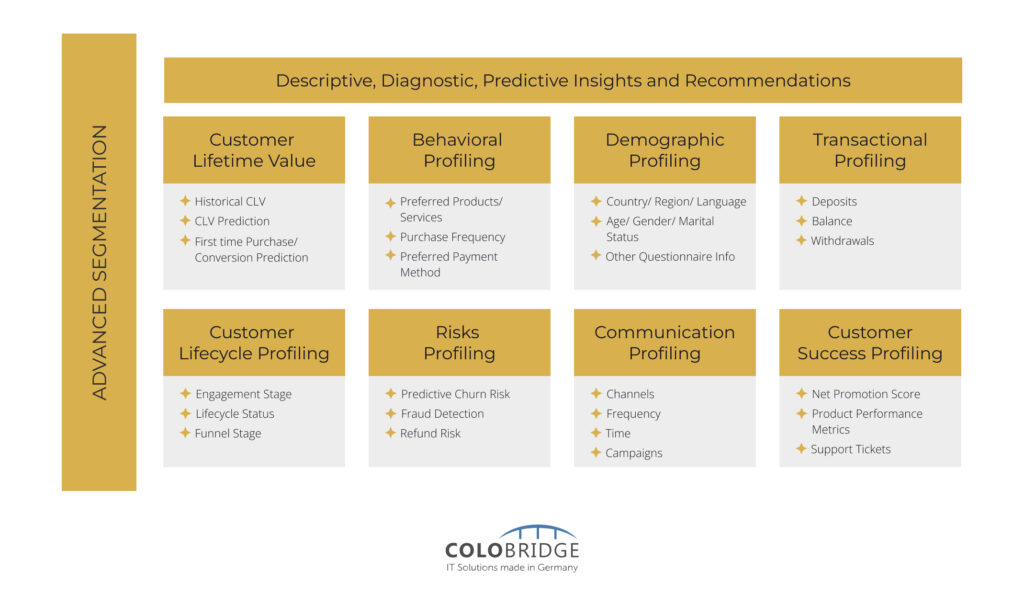Author: Volnyanskyi A.
Data-driven customer relationship management (or the Data-Driven approach) is a relatively new but already proven effective tool. It involves making data-driven decisions using artificial intelligence and is suitable for any business—whether a startup or a large company that has long been established in the market. Another important feature of this approach is its adaptability: you can customize it to meet unique requirements and utilize the resources available to achieve your goals.
Components of a data-driven customer relationship improvement strategy.
These components can confidently be referred to as the “framework” or the core elements of this strategy.

Objective: increasing company profitability
Increasing profit is the ultimate goal for the vast majority of companies, especially in the field of marketing and sales. Boosting profitability is facilitated by attracting new customers and retaining existing ones, as well as by additional and cross-selling.

Building customer relationships based on data
To achieve the set goal, it is necessary to develop a reliable communication strategy with customers. It is based on four principles:
• Who: which specific customer should be contacted?
• What: what message should they receive?
• How: which channel is best for this communication?
• When: when is the best time to reach out to the customer?
Addressing each of these questions requires a detailed, customer-oriented approach that takes into account the current stage of their lifecycle and personal preferences. For example, highly valuable customers with a high risk of churn, can be offered the most attractive deals. Accordingly, even high-cost communication channels, such as personal managers, are suitable for this task. For brand-loyal customers with low churn risks, offering new products to increase their spending within the company may be effective.
But how can we learn about potential customer churn or recognize their product preferences? This is where advanced segmentation (or micro-segmentation) comes in handy.

Advanced segmentation for personalized communications
To determine which content is best suited for specific customers and when it’s best to send a message, it’s necessary to thoroughly analyze demographic, behavioral, transactional, and other data. In this case, the use of descriptive, diagnostic, and predictive analytics can help make the right decision. Analytics based on artificial intelligence helps to form a comprehensive understanding of the customer base, identify key performance indicators, and provide instant performance metrics.
The result can be the creation of multiple micro-segments based on parameters such as churn probability, potential revenue, brand and product loyalty, personal preferences, and many others. This information allows for the development of individualized communication strategies for each customer in line with the company’s global business objectives.
Conditions for building customer relationships based on a Data-Driven approach
The primary condition for implementing this strategy will be data. To establish effective communication with customers based on a Data-Driven approach, a reliable, structured, regularly updated data platform is required. Various analytical models work with it to obtain the necessary customer-related business information. In addition, seamless integration of IT systems with each other will be required: customer data platforms, decision-making systems, artificial intelligence systems, accounting systems, and others.
One should be prepared for the fact that creating personalized content, considering the huge volumes of data, can be a challenging task. In addition to financial investments, it will be necessary to solve a number of operational tasks, organize interaction between disparate teams, and overall foster a data-driven culture within the company.

Colobridge’s Expert:
“In addition to a team, you will need appropriate IT infrastructure. For companies taking their first steps in implementing a Data-Driven approach, deploying, maintaining, and supporting such infrastructure can be complex and resource-intensive tasks. Together with Taluno, we have streamlined this process to the maximum by developing a new product called AI as a Service. It’s a ready-to-use, high-performance data analysis infrastructure, through which the results of artificial intelligence work (including language models specifically developed for your business) will be available with minimal initial investment and without a team with specific skills. If you have the necessary computational power but lack a team, we also offer this option: the AIaaS engine can be deployed on the client’s side.”
To learn more about how to increase your business profitability through improving communication with customers, as well as to request a free data audit, you can reach out to the specialists at Colobridge, a corporate cloud provider.





